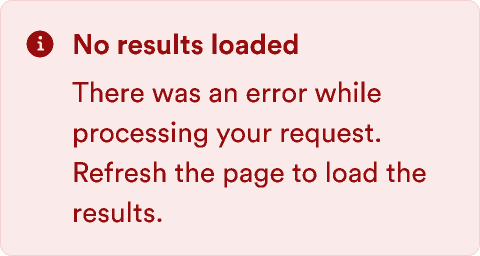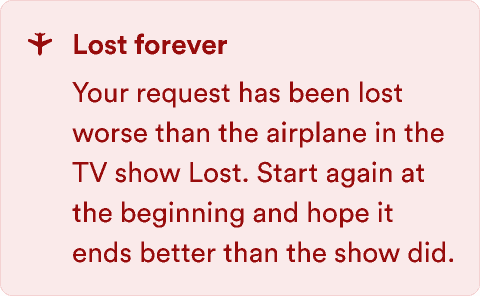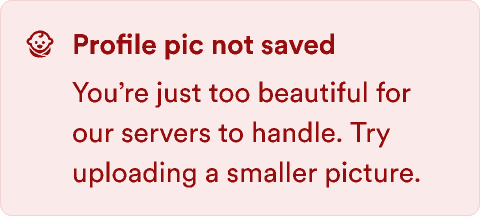
We work to understand and share others’ feelings to help them reach their goals in a compassionate way.
We want to collaborate efficiently and build our product focused around our users. When writing for external users, we use language that shows we understand both their excitement and the issues they might be facing and help them move forward.
We don’t attack or blame other people, but instead try to figure out what led to the current situation and how we can move closer to an ideal state.
Always think of your audience
You should always know who you’re writing for and adjust your language and style based on it. Your writing should also be inclusive so your entire audience is a part of it, no matter their background or language level.
Use terms your audience understands
- While we have a glossary for terms we use, we shouldn’t expect everyone to be intimately familiar with it. We want to use general terms as much as possible.
- Keep jargon and technical terms only for those who know it well.
- Write in plain language so people with any literacy level understand.
Do
Don’t
Use words and structures you’d use when speaking
Make what you’re writing seem natural. If it flows naturally when you say it aloud, people can better understand it.
Tone down the formality (when it makes sense) to keep a conversational style, including using contractions. This has the side effect of making things shorter.
Do
Don’t
Adapt your tone to the situation
These guidelines aren’t absolute and can’t cover everything. You should use your common sense and adapt the guidelines to each situation.
Keep your tone serious in stressful situations
Be more serious with errors
When people are upset about their situation, such as when they encounter serious errors, you don’t want to make them feel worse with out-of-place jokes and excitement.
Do

Don't

You can think about including humor for errors that aren’t a part of their main flow—when they’re unlikely to be feeling as frustrated. You want to find room for a delightful approach that can demonstrate passion.
In a travel app, for example, the main flow is generally about arranging travel. For side flows, like updating a profile, users may be in a more forgiving mood and open to humor.
Use humor carefully
Remember to make it clear what the problem was and what people can do to resolve the situation.

Make descriptions of potential trips light and fun
When people are considering buying a trip, it helps if they can feel excited about the possibilities. When writing for the planning stage, don’t focus too much on the details. There’s plenty of time for that when they’re buying the tickets.
Take advantage of opportunities for playfulness
Parts of the user flow where users are likely to be on a “happy path” — confirmation messages, thank-you pages, or onboarding flows — present a great opportunity to incorporate creative and engaging copy. While clarity and brevity remain our top priorities, we should also strive to delight our users.
We’re charming, but we’re not cutesy.
Do
Don’t
We care, but we’re not desperate.
Do
Don’t
We’re direct, but we’re not condescending.
Do
Don’t
Keep focus on users
We aim to show our understanding of others and not just our inside jokes. Keep your text focused on your audience.
Describe what choices mean for users
When describing a potential service or other option, make it clear what choosing that option means for users up front. Don’t wait until after they’ve chosen to see what it means.
Understand what users expect at each step in the process and you can help satisfy them.
Address users directly
- When describing a trip, write about what “you” will do on the trip.
- When writing a guide, focus on what “you” will do to accomplish the task.
Do
Don’t
Do
Don’t